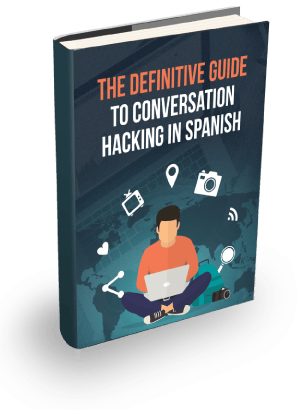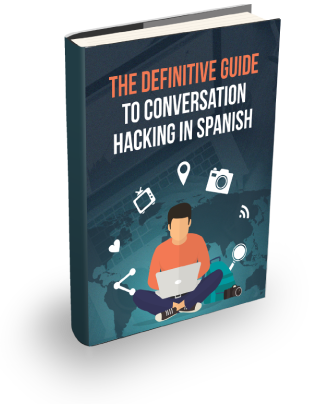In this episode of the Real Fast Spanish Tips Podcast I introduce the first 10 words of the conversation hacking high frequency vocabulary.
These first ten words are chosen based on the a combination of frequency, utility and my own personal experience with using the language during my Spanish adventures.
Quote from the podcast episode:
“Pero no hablar contigo es como tener el mismo mal día, una y otra vez.” – Carolina Pineda
In this tip, you will learn about:
- The new routine for the podcast
- The first important 10 Spanish words
- Basic verb conjugations
| # | Español | English |
|---|---|---|
| 1 | yo | I |
| 2 | querer | to want |
| 3 | este | this |
| 4 | sí | yes |
| 5 | no | no |
| 6 | poder | to be able to |
| 7 | hablar | to speak |
| 8 | encontrar | to find |
| 9 | tener | to have |
| 10 | necesitar | to need |
Examples from the episode:
– First person conjugation of “Querer”: Quiero (I want)
– Yo quiero este (I want this)
– Yo quiero esto (I want this unknown gender for this)
– Quiero este (drop the pronoun “yo”)
– No quiero este (I don’t want this)
– Hablo Español (I speak Spanish)
– No hablo Español (I don’t speak Spanish)
– No puedo hablar Español (I can’t speak Spanish)
– No necesito este (I don’t need this)
– Quiero encontrar este (I want to find this)
– No puedo encontrar este (I can’t find this)
If you want to learn more check out the conversation hacking guide here.
The guide includes:
- Top 1000 words for conversation hacking spanish
- 13 Spanish grammar hacking sentences
- Sounds to focus on for pronunciation
- Conversational skills questions and tips
- Language learning mindset tips
Podcast: Play in new window




I am in a constant battle with a teaching website about: this, esto, that, ese, and that over there, aquello. In translation the context is referring a distant object and every time I use aquello/a/s etc. they have quibbles about it. They expect ese/os etc. Which is right?
And to boot, the difference between yo quiero and quiero. They use I want in English and want me to translate it quiero sometimes and yo quiero other times. I would expect to see double exclamation marks (or a single exclamation mark in English) to indicate YO QUIERO, I WANT! rather than quiero. I put up with it because their site is free and being of modest means I can’t go elsewhere.
Hola Mike, it’s best to think of this not in terms of “right” and “wrong” but instead in terms of “more common” and “less common”. We can also examine this through English, when should we say “this book” vs “that book” vs “that book over there”? If I say “this book” and you respond “ah, that book”, could we reverse “this” and “that” in this example? Similarly “esto” and “eso” can often be swapped and substituted for one another in Spanish without grammatical errors. And it is the same with “yo quiero” and “quiero”, both options are grammatically possible, so there isn’t a “right” and “wrong” just two options. Our job as Spanish students is to observe which one is more common and try to make a similar decision that a native would make in the same situation.
Hello Andrew,
your wonderful way of teaching has two advantes for me.
Puedo mejorar mi inglés y mi español al mismo tiemo.
Puedo matar dos pajaros de un tiro.
Muchas gracias y saludos desde Alemania.
Wolfgang
¡De nada! Thanks for the feedback Wolfgang! 🙂